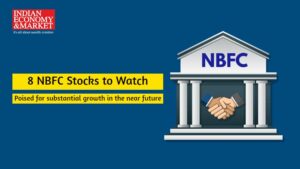By Ashok Jainani
To make money in stock markets require making the right choice from the wrong ones. Reality in this world is quite ruthless and unkind than media, talking heads and bragging politicians would have you believe.
The future value of every investment is a function of its present price today. Higher the price you pay; lower the returns you get. This is said to be the core principle of successful investing by eminent investment philosophers. The idea is to promote the belief that a “stock is not just a ticker symbol or an electronic blip; it is an ownership interest in an actual business, with an underlying value that does not depend on its share price.”
How many people, an average Joe, or large institutional investors, buy a share with such consideration? In a bull market, they get attached to a stock so much that they choose to ignore all the warnings of its impending fall after having run far ahead, far away, from the value of the underlying business. In a bear market, they do not have any interest, or any cash, left to buy the same even if that “fantastic business” was then available at less than the replacement cost, or substantial discount to its so-called intrinsic value.
Subjective bias of investment advisors is amply evident in this advice, as they do not consider and compare their own bet size with that of individual investors like you and me, which often is quite smaller. Rather, they look from their own business perspective, as they control vast money pools and have the muscle to buy large percentage stakes and also exert, to an extent, their say on the managements of companies where they invest. It’s like forcing a heavyweight sumo wrestler’s diet on a tiny jockey, or the other way round. Both can’t survive this torture. To remain in their respective professions and succeed, they have to follow the diet that is apt and appropriate for each, not the one required for the other.
Everyone buys shares with one and only aim to earn profits, irrespective of what business growth the company may have. There are scores of companies, everywhere in the world, including India, as also maniac periods when stocks rise but businesses do not grow, and such periods when the stocks fall but the businesses actually grow. This happens because stock markets generally tend to discount future economic events much ahead of their occurrence.
Take for example, the fall in stock markets worldwide in 2008. The fall in the Dow Jones Industrial Average started in late 2007, much before the credit market collapse gobbled up the iconic Wall Street banks in the latter half of 2008. Similarly, in India, the Sensex started falling ever since January 2008, even before the constituent companies recorded one of the fastest earnings growth rate during the next quarter.
“Obvious prospects for physical growth in a business do not (necessarily) translate into obvious profits for investors (in those stocks),” Benjamin Graham, notes in his book, The Intelligent Investor. Further, he adds that there are no dependable models for selecting companies or businesses that would perform consistently in the future.
Whether you have a small position of a thousand shares, or a big stake of a million shares in McDonald’s, there is no way you can know for sure, rather anticipate, that someday in the future Subway, or some other fast food chain, would not overtake McDonald’s, leaving behind all those business and brand value believers with square faces. If you think McDonald’s is a great business, so must the stock also be, and chances are that Greed Street might prove you wrong and teach you a good lesson.
Fortune Business Need Not Bring Fortune
Compare Ford Motors’ current stock price and the number of cars it sells with its stock price and business ten years ago, to know whether the market appreciates buying stock or the business. Or try matching the number of retail outlets of Wal-Mart and its stock price in 1999 with its stock price in 2011. The business might be booming, but stock investors have a different, and a sad story to tell. No “fortune” teller can guarantee that a current Fortune-500 company would remain in the listing next year, and a major company now would not become a minnow over some period of time. Likewise, today’s giants such as Facebook and Google did not even exist a few years ago. Fannie Mac and Freddi Mac once were darlings of the Wall Street.
Change, The Only Constant In Any Business
According to the theory of “Buy the Business, Not the Stock”, whenever an investor chooses company and its business for investment, it is generally based on the current management’s capability to generate higher future sales and profits. But, the team of people running the business is not static. There is constant change in management, their views on current and future business; and ability to deliver on those promises. Any change in management’s approach can bring about a significant change in investors’ risk appetite. Thus, the issue of management credibility and capability – a subjective, and volatile risk factor – emerges for investors relying on the theory of ‘Buy the Business, Not the Stock.” The examples of such “world class” businesses going bust, or others growing measly, are plenty.
Who Knows Who’ll Go Bust Next
Even God may find it difficult to anticipate who would be the next Glencore, Lehmann Brothers, Merrill Lynch, AIG, Bernie Madoff, Enron, Worldcom, Daewoo, BCCI or Phar-Mor. The search for top hundred corporate frauds during the last two decades throws up names that were envied and iconic in their heyday. There are many that were once very well-known names, depending on the size and nature of the fraud.
The records of revenue authorities and websites of the Securities Exchange Commission (SEC) and Securities & Exchange Board of India (SEBI) exhibit a long list of offenders. These include scores of reputed companies, banksters, some of whom having voluntarily settled regulatory proceedings by way of large one-time monetary payoffs on condition that they neither admit, nor deny their guilt. The latest and one of the largest, but surely not the last, is Goldman Sachs’ settlement with the SEC by a payment of US$550 million. Bank management would have definitely thought over the matter before deciding to pay such a large sum. Just imagine, what would be the bank’s payoff for such a gigantic one time settlement. It throws some light on how these businesses are built, run and managed. Whatever be the name – fine, penalty or voluntary charge – under consent terms, or plea bargaining, the very fact that companies are willing to pay to settle the matter with regulatory agencies proves something, though the dictionary meaning of the same could be at variance with the explicit practical terminology.
The roll call of SEC offenders and bankruptcy filings show that the rogues are a respected lot and highly awarded too, till found guilty. Perhaps, because they can afford to buy respect using various respectable means.
The average trader trades the stock, not the business, which most often is not within the realm of her understanding or influence, because of too little knowledge, too small an exposure and very little voting power.
We invest in a stock at a price, which is the only fact. The rest – quality of the business, management’s ability, practices and other such attributes – are all subjective elements. Thus, we reach the conclusion that the best option available to an ordinary investor is “Buy the Stock, and Not the Business.” All that he has to track is the price at which he can afford either to buy or sell. Having this in mind, the investor would not fall in love with the stock, and would be ready to exit his position the moment he finds the price exorbitant. The followers of “Buy-the-Business” principle tend to fall in love with the stock, continue to hold it despite the market giving contradictory signals and in turn destroy their wealth. Jesse Livermore said “The stock market is never obvious. It is designed to fool most of the people, most of the time.”




















